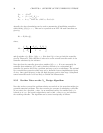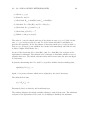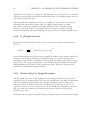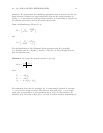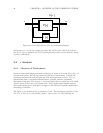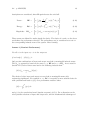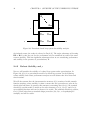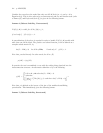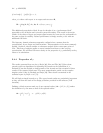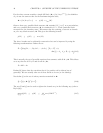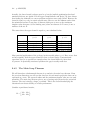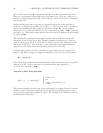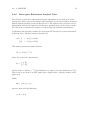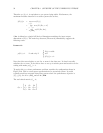46 CHAPTER 2. OVERVIEW OF THE UNDERLYING THEORY
F
u
(G(s),∆) stable for all ∆ ∈ B∆
if and only if µ(G
11
(s))
∞
< 1.
where
µ(G
11
(s))
∞
=sup
ω
µ[G
11
(ω)].
The use of this notation masks the fact that µ is also a function of the perturbation
structure, ∆. The above definition of µ applies to the more general block structure given
in Section 2.2.4. We can even consider the some of the blocks to be real valued, rather
than complex valued. The robust stability lemma is still valid; however the calculation
of µ becomes significantly more difficult.
In applying the matrix definition of µ to a real-rational G
11
(s), it has been assumed that
∆ is a complex constant at each frequency. This arises from the assumption that ∆ is
linear and time-invariant. Under this assumption we can examine the combination of
system and perturbation independently at each frequency. The analysis then involves
looking for the worst case frequency. If ∆ is not time-invariant then the frequency by
frequency analysis does not apply; ∆ can be used to shift energy between frequencies
and cause instability not predicted by the above analysis.
In practice this µ test is applied by selecting a frequency grid and at each frequency
calculating µ(G
11
(ω)). The choice of range and resolution for this grid is a matter of
engineering judgement. If very lightly damped modes are present a fine grid may be
required in the region of those modes.
2.4.3 Robust Performance
The obvious extension to the above is to consider performance in the presence of
perturbations ∆. For e, w ∈ BP or BL
2
robust performance is a simple extension of
robust stability.
Lemma 8 (Robust Performance)
F
u
(G(s), ∆) is stable and F
u
(G(s), ∆)
∞
≤ 1 for all ∆ ∈ B∆



